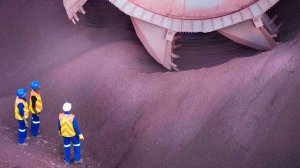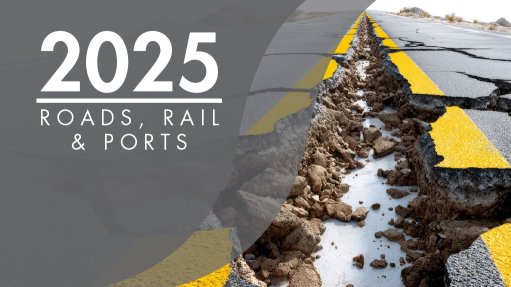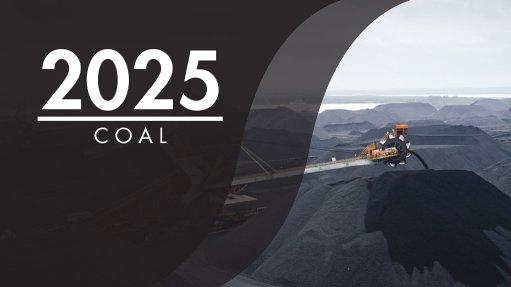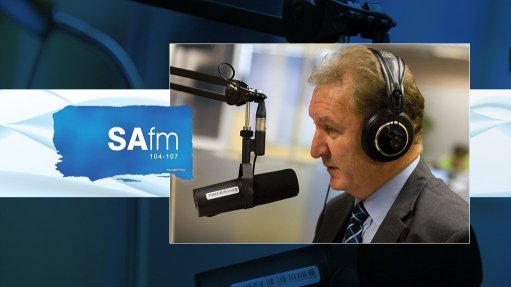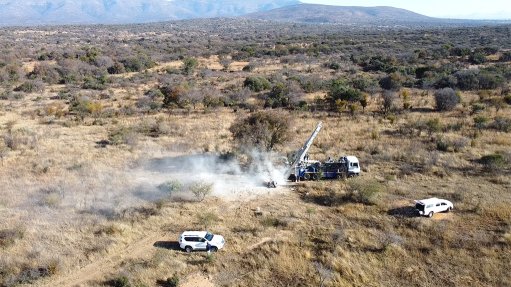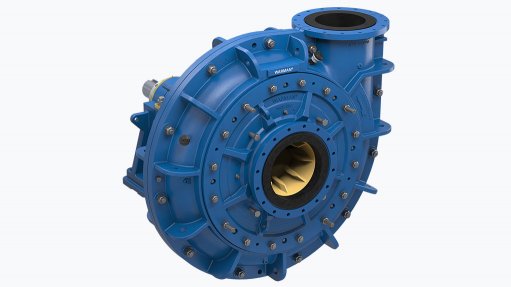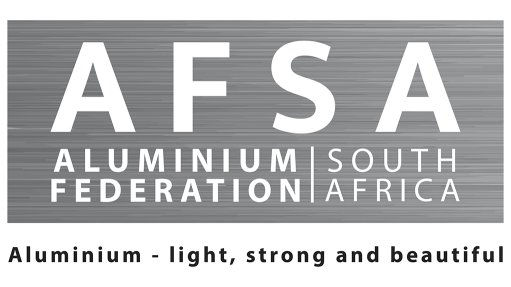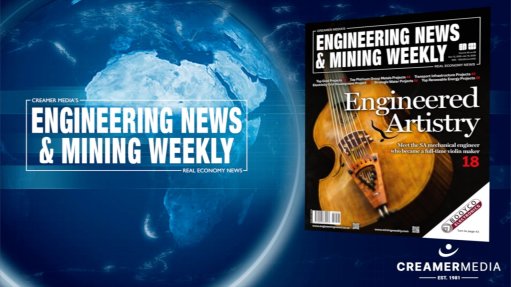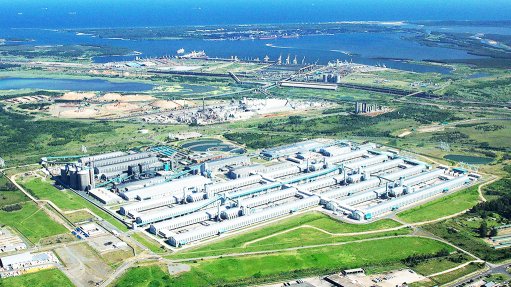South Africa’s Kumba Iron Ore helping to lessen carbon emission in global steelmaking
JOHANNESBURG (miningweekly.com) – The high ferrous content of Kumba Iron Ore's iron-ore, which is produced in South Africa’s Northern Cape, is helping to lessen CO2 emissions at a time when this is the global pursuit of steelmakers.
Mining Weekly can report that the iron (Fe) content of Kumba ore is typically considerably ahead of its peers by being above the Platts 62 index.
Moreover, Kumba’s lump-to-fine ratio is a further differentiator.
For the first half of this year, Kumba’s Fe was 64.1% and lump-to-fine ratio was 67:33, in contrast with a broader industry trend of declining ore quality. Some iron-ore majors have gone down to 61% Fe, and the highest lump-to-fine ratio produced being well below that of Kumba.
Owing to its premium grade, the iron-ore product of the Johannesburg Stock Exchange-listed Kumba reduces the Scope 1 carbon emissions of customers.
As a result, demand for it is poised to increase in the medium to long term.
Highlighting the importance of iron-ore that contributes to decarbonisation was last month’s visit to Shanghai by Australia Prime Minister Anthony Albanese, which took place against the background of the iron-ore from Australia’s ageing Pilbara region falling short of the quality and purity typically required.
As a consequence, effective from January 2, Platts is lowering the benchmark grade of the Australian ore from 62% to 61% iron content and going forward, the closing of quality gap is going to need considerable investment in renewable energy and green hydrogen to bring about clean processing.
By contrast, at the desirable end of the Platts Index is South Africa’s Kumba, an Anglo American group mining and marketing company which is earning a premium in the global market because of the ability of its quality ore to lessen CO2 emission.
Kumba’s standard and premium products are ideal for the blast furnace steelmaking method, with higher-grade ore not only reducing CO2 emission but also improving productivity.
As a rule of thumb, each 1% increase in Fe lowers CO2 emission by 2.5%. On top of that, the use of the lump ore that is synonymous with Kumba reduces CO2 emissions by around 10%.
In addition to blast furnace steelmaking, Kumba sells some of its premium-grade to steelmaking companies that use direct reduction (DR) in direct reduced iron (DRI) production, which is a carbon light steelmaking method.
Globally, more than 70% of blast furnace capacity is less than 20 years old and most of it is thus expected to remain in service for at least another 20 years and, together with DRI-steelmaking, continue to account for more than 60% of global production.
In the six months to June 30, Kumba obtained an average realised free-on-board export price of $91 per wet metric tonne (wmt), which was 8% above the benchmark price. The $11/t it obtained for its Fe and lump was partly offset by marketing premium and timing effects of $4/t, giving a net product premium of $7/t.
Contributing in major fashion now is also the ultrahigh dense medium separation (UHDMS) that Kumba dispenses.
Remarkable, UHDMS is on the way to trebling the volume of premium-grade product produced as a proportion of the total production of Kumba’s Sishen Iron Ore opencast mining operation, which will result in premium-grade volumes increasing from less than 20% to more than 50%. On top of that, the technology lowers the cutoff grade from 48% to 40%, reduces the life-of-mine stripping ratio from 4.2 to 3.6 and secures Sishen’s life-of-mine to 2040.
Owing to UHDMS technology being margin enhancing, Kumba expects to earn an additional marketing premium of between $2 and $3 per dry metric tonne (dmt), This is because the technology allows higher volumes of premium product as a proportion of total Sishen production.
UHDMS also enables less waste stripping as Kumba is able to process in-situ C-grade material, thereby reducing mining costs by about $2/dmt to $3/dmt.
Without UHDMS, Kumba would need to ramp up mining equipment significantly, increasing waste mined, mining costs and capital expenditure.
UHDMS is therefore central to Kumba’s strategy to maximise product premium, reduce waste, maintain cost efficiency and extend mine life.
Kumba’s Kolomela iron-ore operation currently produces direct shipping ore grade quality product, but in future, UHDMS conversion similar to that implemented at Sishen could also be implemented at this younger iron-ore operation.
Mining Weekly: How many job opportunities has Kumba created outside of the mine fence, how many small businesses has Kumba created and what is a distinctive example of community development that Kumba has fostered?
Kumba: We employ 80% of our workforce from local mine communities in the Northern Cape region and 30% of our workforce are represented by women. When considering we paid R3.5-billion in salaries and benefits in the first half (H1) of this year, these jobs are critical to the local economy of the Northern Cape. In H1 2025, we spent R8.2-billion (H1 2024: R8-billion) with qualifying BBBEE suppliers, including R1.4-billion with host community-owned businesses and 670 jobs were facilitated across several sectors outside of the mining industry, including agriculture, livestock development, hospitality, manufacturing and tourism. Since 2018, we have facilitated more than 42 000 jobs outside of Kumba’s mine gate. As part of our R135-million social investment, we support community healthcare in our host communities. This year, we launched the Collect & Go Smartlockers, which improves access to chronic medication securely and conveniently. Additionally, an R11-million community bursary programme has enabled 78 young people from host communities to access further education and training, many of whom are now pursuing careers in fields such as engineering, education, and law. We also support 19 schools in the Northern Cape, benefiting 10 400 learners and 330 teachers, and contributed R1-million to the top 20 matriculants in the province to nurture future leaders. Overall, we created R25.9-billion in shared value in H1 2025, including R5.3-billion in dividends to shareholders and R1.9-billion to our empowerment partners.
What are the ideals to strive for when it comes to rail transport and port operation and how long is it going to take, and how much is it going to cost, to be globally competitive on rail and at the port?
Overall, we’ve seen encouraging signs of progress over the last six months. Rail performance improved to 83% of contracted volumes, which together with improved equipment availability at the Port of Saldanha Bay, resulted in a 3% increase in sales. This progress is a direct result of the partnerships that we have in place, particularly the ongoing technical support to Transnet and collaboration through the Ore User’s Forum (OUF). The Ore Corridor Restoration programme is expected to unlock further improvement over time. We have finalised the Mutual Cooperation Agreement (MCA) between Transnet and the OUF. This is an important milestone. It formalises the working partnership and enables urgent maintenance work to be delivered faster, more efficiently, and with greater alignment. In addition to the MCA, further long-term funding mechanisms are being evaluated by government. The Independent Technical Assessment completed last year found that significant work still needs to be done across the rail network, port, and rolling stock to restore the system to design capacity. A significant capital investment (including contingencies) is required to achieve this. Private-sector involvement in managing and maintaining the ore export channel remains the preferred approach to ensure efficiency, reliability, and long-term sustainability. For Kumba, this means partnering with capable logistics operators to improve throughput and reduce delays. Achieving this requires strong collaboration with government stakeholders, particularly the Department of Transport (DoT) and Transnet, to align on infrastructure investment, policy support, and operational execution. Encouragingly, regulatory reforms are underway, creating a more conducive environment for collaboration and investment. Kumba, as part of the OUF, is engaging in the government’s recently announced Private Sector Partnership process, assessing its impact and exploring opportunities to strengthen the iron-ore export logistics and infrastructure. At the end of May, the OUF submitted a response to the request for information to the DoT. We now await the release of the commercial request for proposal later in the year. Despite global economic uncertainty and market volatility, Kumba continues to deliver stakeholder value. The company has made strong progress on its strategy of safely and sustainably unlocking value from its core assets, underpinned by consistent production, cost, and capital discipline. In H1 2025, Kumba delivered Ebitda of R16- billion, free cash flow of R7.9-billion, and declared an interim dividend of R16.60/share. This was supported by our ability to earn an additional premium, thereby achieving an 8% higher average realised price than the benchmark iron-ore price. We also kept our C1 unit cost flat at $39/wmt. Our break-even price improved by $10/t to $64/t, ensuring Kumba is better positioned for market volatility. These results reflect the company’s resilience, operational excellence, and commitment to long-term value creation.
Article Enquiry
Email Article
Save Article
Feedback
To advertise email advertising@creamermedia.co.za or click here
Announcements
What's On
Subscribe to improve your user experience...
Option 1 (equivalent of R125 a month):
Receive a weekly copy of Creamer Media's Engineering News & Mining Weekly magazine
(print copy for those in South Africa and e-magazine for those outside of South Africa)
Receive daily email newsletters
Access to full search results
Access archive of magazine back copies
Access to Projects in Progress
Access to ONE Research Report of your choice in PDF format
Option 2 (equivalent of R375 a month):
All benefits from Option 1
PLUS
Access to Creamer Media's Research Channel Africa for ALL Research Reports, in PDF format, on various industrial and mining sectors
including Electricity; Water; Energy Transition; Hydrogen; Roads, Rail and Ports; Coal; Gold; Platinum; Battery Metals; etc.
Already a subscriber?
Forgotten your password?
Receive weekly copy of Creamer Media's Engineering News & Mining Weekly magazine (print copy for those in South Africa and e-magazine for those outside of South Africa)
➕
Recieve daily email newsletters
➕
Access to full search results
➕
Access archive of magazine back copies
➕
Access to Projects in Progress
➕
Access to ONE Research Report of your choice in PDF format
RESEARCH CHANNEL AFRICA
R4500 (equivalent of R375 a month)
SUBSCRIBEAll benefits from Option 1
➕
Access to Creamer Media's Research Channel Africa for ALL Research Reports on various industrial and mining sectors, in PDF format, including on:
Electricity
➕
Water
➕
Energy Transition
➕
Hydrogen
➕
Roads, Rail and Ports
➕
Coal
➕
Gold
➕
Platinum
➕
Battery Metals
➕
etc.
Receive all benefits from Option 1 or Option 2 delivered to numerous people at your company
➕
Multiple User names and Passwords for simultaneous log-ins
➕
Intranet integration access to all in your organisation




